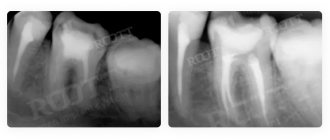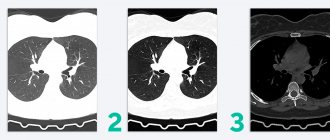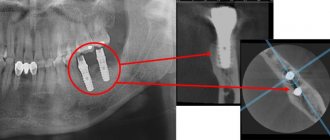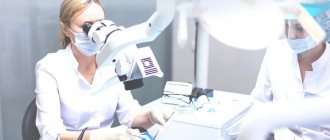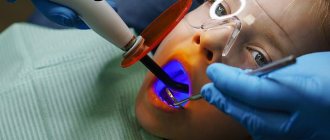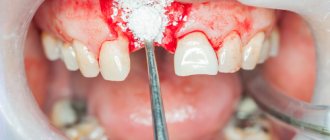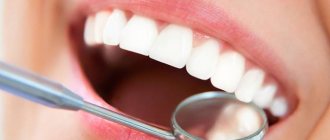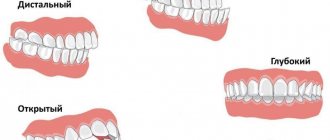- What is tartar
- How is tartar formed?
- Types of Tartar
- Symptoms and consequences of tartar
- How to prevent tartar formation
- Methods for removing tartar
- How is tartar removal performed?
- Removing tartar at home
- Side effects from scaling
- Proper brushing of teeth
- Prices for tartar removal in Moscow
What is tartar and what is the cause of the disease. What methods will help eliminate this aesthetic problem. Is it possible to remove formations without resorting to the help of a dentist?
What is tartar
Tartar is a formation that is a keratinized plaque consisting of poorly removed food debris, calcium, phosphorus and iron salts covered with a biofilm of dead bacteria.
You can find fossilized food deposits over the entire surface of the dentition, but most often the concentration is on the lower incisors, closer to the gums and on the sides.
Please note that tartar can penetrate the back wall and inside the gums. It is usually found in hard-to-reach places where it is impossible to remove food debris with a toothbrush.
What oil should I use?
In traditional Ayurveda, sesame oil has been used for thousands of years; in African countries, sunflower oil is preferred, and in America, coconut oil is preferred. Which of these three to use is up to you; focus on personal preferences. But remember that the oil must be organic, unrefined and cold pressed. It is also believed that, due to the content of lauric acid, coconut oil has strong anti-inflammatory and antimicrobial properties, that is, it kills bacteria, viruses and yeast infections. Oils can also be rotated - use one or the other in cycles.
And for an additional therapeutic effect, add one or two drops of organic essential oil to the vegetable oil, always (!) intended for oral administration. Alternatively, use eucalyptus oil - among its properties are antiseptic and expectorant, as well as the ability to heal the respiratory system.
How is tartar formed?
Food particles attach to tooth enamel. Most often from soft and sticky foods, such as flour products.
Under the influence of saliva, a film of glycoproteins is formed; if you do not rinse or brush your teeth, then after 4 hours streptococci bacteria come into play, and actinomycetes join them. After 2 days, streptococci decrease, but the number of anaerobic bacteria increases. After 7 days, spirochetes and motile rods appear.
Remains of food and the bacteria that multiply on them are gradually covered with a film of saliva, smoothed out and hardened. Tartar grows because new layers are added to existing particles.
Fermentation and metabolism processes occur under dental plaque, during which acids are formed. They weaken tooth enamel so that tooth decay can develop over time.
Tartar can also cause bad breath.
Plaque can eventually turn into tartar through mineralization—minerals from saliva are deposited in plaque and make it very hard.
This is how complications arise; as a result of a neglected condition, you can lose a healthy tooth, but ringed with plaque.
The rate of mineralization varies from person to person. It all depends on the following factors:
- the amount of saliva produced;
- its composition and activity of secretions;
- quality of oral hygiene;
- nutritional characteristics;
- violation of salt exchange in the body;
- wearing dental structures (prostheses);
The predominance of solid foods (raw vegetables) significantly reduces the development of plaque. The products act as a cleaning agent, helping to remove dirt from the enamel. Chewing for a long time releases more saliva, which has an antibacterial effect.
Doctors' recommendations
Doctors have different opinions: some do not recommend turning to traditional or Indian medicine, while others recommend using such methods only as additional oral care. They agree that regular rinsing can help get rid of some diseases, but it is necessary with drug treatment.
Foreign doctors studying the effects of oil rinsing on health note that in the first few days, general health may worsen. The person will feel a headache, mild nausea and dizziness. This is because the cleansing process has begun. This is how the body gets rid of toxins and bacteria.
What modern science says
After eating, many food particles remain between the teeth and on the gums, which leads to disease. A variety of microorganisms live in the mouth and help digest food.
However, there are also those that cause harm. For example, they provoke caries and other various diseases. All this leads to weakened immunity and the development of internal inflammation.
Research by scientists has shown that rinsing will help cope with various pathogenic microbes in the mouth, including Streptococcus mutans, the main bacterium that causes caries.
What does Ayurveda offer?
With daily rinsing, the results will pleasantly surprise you:
- the body is strengthened;
- teeth become healthier;
- the condition of the gums improves;
- Nasal congestion and cough go away;
- skin is cleansed.
Types of Tartar
Fossils on enamel come in different types depending on location. So they distinguish:
- supragingival stones – formed on the first molars (lateral) and front or lower teeth;
- subgingival - hard areas that penetrate soft tissue;
- stone bridge – covering the main and adjacent teeth.
Periodontitis or Periodontal disease
Despite the fact that the names are very similar, periodontitis and periodontal disease are two completely different diseases that are connected by only one thing - they develop in periodontal tissues.
The periodontium is the gums, the cement of the tooth root, the bone tissue surrounding the tooth, the periodontium (the ligament connecting the tooth and the bone), nerve fibers, blood and lymphatic vessels that supply this area.
The difference between the diseases is that periodontitis is an infectious inflammatory process, and periodontal disease is a non-inflammatory process of destruction of periodontal tissue caused by insufficient blood supply.
Symptoms and consequences of tartar
Patients experience the following symptoms:
- bad breath;
- bleeding gums;
- caries;
- purulent discharge;
- gingivitis;
- pulpitis;
- periodontitis – inflammation of tissue areas near the root of the tooth;
- mobility and tooth loss.
Gingivitis
The initial form of gum disease.
If left untreated, gingivitis can develop into periodontitis, which is a serious, irreversible gum disease and the most common cause of tooth loss in adults.
The main 4 signs of gingivitis:
- Bleeding gums. Healthy gums do not bleed. If blood comes out when using a toothbrush or floss, this may indicate the onset of gingivitis. Even if it happens from time to time. The symptom should not be ignored as it may be a sign of the onset of gum disease.
- Unpleasant smell. There are many reasons for a bad odor: specific foods, poor hygiene, but it can also be the first sign of gingivitis. This is due to the fact that the bacteria that cause gum disease produce an unpleasant odor by breaking down food particles in the mouth.
- Swollen gums. They are usually pink and firm. Redness and swelling may indicate the onset of the disease.
- Receding gums. They begin to separate, and the root of the tooth is exposed, the incisors appear longer. Increased sensitivity is another sign.
A common cause of toothache is inflammation of the dental nerve, called pulpitis. Anyone suffering from this should seek help from a dentist as soon as possible.
Pulpitis
In acute pulpitis, pain usually occurs spontaneously. The pain may be constant or occur periodically. In rare cases, the inflammatory process is completely painless.
If the affected tooth is sensitive to pressure and impact, this is a sign of a dead dental nerve. It hurts when you touch the tongue, but especially when you squeeze it. The pain is often worse at night, as the warmth of the bed increases the inflammatory process. If left untreated, bacteria from the medullary cavity of the tooth can penetrate through the hole at the root tip into the surrounding bone and soft tissue. Accordingly, inflammation spreads, the cheek and lymph nodes swell.
Periodontitis
Periodontal disease is defined as chronic inflammatory disease of the gums. It is mainly caused by bacterial plaque (biofilm, plaque), especially in old age.
As a result of inflammation, your teeth may hurt and your gums may bleed more easily. If left untreated, periodontitis can also lead to tooth loss.
Patients with periodontitis usually show few symptoms at first. However, some signs may indicate the disease:
- bleeding gums;
- red and swollen gums;
- Gum recession;
- open and sensitive necks of teeth;
- putrid odor from the mouth;
- unpleasant taste, especially when pus leaks from the inflamed areas;
- The spaces between the teeth widen;
- loose teeth, misaligned teeth.
Possible harm and contraindications
Oil pulling can cause the greatest harm if you do not know how to rinse your mouth with oil correctly or if you use this procedure as a replacement for standard care. It is extremely important to avoid swallowing the oil as it may cause stomach upset or diarrhea. Also, according to the American Dental Association, oil getting into the lungs poses a risk of developing lipoid pneumonia. It is for this reason that the practice of oil pulling is not recommended for young children. It is worth paying attention to the composition of the oil used, since some of them may contain harmful additives.
When introducing a new hygiene practice into your morning routine, it is important not to overdo it. Rinsing your mouth for more than 20 minutes can cause a variety of side effects, including thirst, dry mouth, and decreased taste sensitivity.
How to prevent tartar formation
By observing good oral hygiene, you can prevent the (re)formation of tartar:
- Brush your teeth thoroughly at least twice a day using a good manual or electric toothbrush and fluoridated toothpaste.
- Clean between teeth once a day using dental floss or interdental brushes.
- With these measures it is possible to prevent the formation of plaque and therefore tartar, as well as to prevent tooth discoloration and decay.
Oil pulling theory
Oil pulling uses the ability of oil to attract its own kind, namely to pull other oils and fat-soluble toxins from tissues, thereby providing a cleansing effect. Bacteria that inhabit the oral cavity have a greasy outer shell. When they come into contact with another fatty substance, such as oil, they stick or are attracted to it.
Since the oil has the ability to penetrate into hard-to-reach areas of the mouth where a toothbrush cannot reach, it can trap hidden bacteria.
This amazing property of oils has been used for centuries in classical Ayurvedic detox practices. The ancient Indian system of medicine includes the concept of ama, which refers to accumulated toxins and various impurities in the body. Ama is believed to be partially digested material derived from food that clogs the body and causes an immune reaction. It is precisely to reduce this ballast that oil rinsing is aimed.
According to Ayurveda, the tongue is associated with various organs such as the kidneys, heart, lungs, small intestine and spine. Oil pulling is believed to help in eliminating toxic heavy metals through saliva. Oil pulling activates salivary enzymes that absorb toxins and remove them from the body through the tongue.
Here is what the canonical book of Ayurveda, Charaka Samhita, says: “The practice of oil pulling provides strength in the jaw and voice, facial development, maximum taste and pleasure in food. A person who practices it does not suffer from a dry throat, is not afraid of cracked lips, and his teeth are not affected by caries, but become strong. They (teeth) are not painful, are not hypersensitive to sour taste, but gain the ability to chew even the hardest food.”
Methods for removing tartar
- Physical method. Consists of mechanical destruction of deposits using a dental instrument with a thin tip. Modern medicine uses the Air flow system. Fine particles of soda are applied under high pressure, causing a stream of air containing the powder to knock the fossils off the tooth. A subsequent stream of water washes away the separated particles.
- Chemical method. Allows you to remove formations with the help of compounds that dissolve the basis of tartar - deposits of mineral salts. A composition is applied to the teeth that softens plaque, but does not cause significant harm to the enamel. Then the impurities are removed.
- Ultrasound. Ultrasonic waves do not injure teeth and gums. Contraindicated in patients using a pacemaker.
- Laser. The laser method can be used specifically in dentistry for various procedures. It is one of the most effective and expensive procedures. The laser beam is very thin and can be used precisely. This way, only truly unwanted tissue is destroyed. Healthy tissues are preserved. Local anesthesia is often not required. Laser treatment does not cause noise or vibration like drilling. The virtually painless treatment is especially suitable for anxious patients.
Benefits of clove essential oil
It helps relieve throbbing pain in the tooth, thanks to a substance in its composition called eugenol. Clove oil is obtained from the clove tree, using the buds, leaves and the tree trunk itself. Clove oil fights gum inflammation and has analgesic and antiseptic properties.
It can be prepared at home, for this you need to take edible cloves, throw five buds into one glass of vegetable oil and boil, then cool and apply a cotton swab dipped in this oil to the sore tooth.
How is tartar removal performed?
At the first stage, the presence or absence of allergies in the patient to drugs will be determined.
Then the degree of sensitivity of the teeth is determined, and an anesthetic is applied as necessary.
The method by which the procedure will be carried out is selected.
For rough tartar removal, an ultrasonic scaler is often used first. This is followed by processing with special hand tools to remove stubborn dirt.
The enamel is cleaned of residual particles of contamination and the doctor begins to polish the teeth so that the surface is completely smooth.
Small irregularities and areas of rougher texture on the teeth are also smoothed out, providing protection against further plaque buildup.
The enamel of the teeth is coated with varnish.
After the work has been done, the dentist will advise how often you should plan to remove tartar.
It should be noted that professional cleaning is only intended to be an addition to daily thorough oral hygiene and should in no way be considered a replacement for brushing your teeth twice daily with fluoride toothpaste.
Causes of candidiasis in the mouth
Candidiasis is a mycosis that affects the oral mucosa (gums, tongue, palate, inner cheeks). The disease occurs for a number of reasons that are associated with impaired immunity and the creation of favorable conditions for the development of fungal microflora. Before treating oral candidiasis, you need to determine the cause in order to act directly on it.
The main reasons for the development of fungal disease:
- taking antibacterial drugs:
- lack of hygiene;
- pathologies that provoke a decrease in immunity;
- nervous tension, stress;
- poor diet, excessive consumption of alcoholic beverages.
Removing tartar at home
Home remedies for tartar can be useful for removing soft plaque without the help of a dentist.
If there is already a hard coating, then you should definitely seek treatment from a specialist. Trying to pick out deposits on your own will not work. As a result, the enamel will only be damaged. It cannot be restored.
- Vinegar and lemon. The acid contained in vinegar and lemon acts against tartar. However, the taste is unpleasant, and the acid has an aggressive effect on tooth enamel. These home remedies should be used no more than once a month.
- Baking powder. The crystals found in baking powder and baking soda act like sandpaper and remove unwanted coating. Dip your fingertip in baking soda and vigorously rub the affected areas. However, the powder can potentially damage healthy gums and tooth enamel.
- Tea tree oil. Rinse your teeth thoroughly with a solution of 1-2 drops in a glass of warm water.
- Xylitol. Xylitol is a sugar substitute and, as an ingredient in chewing gum, can support oral hygiene. Research shows that xylitol is beneficial for dental health.
- Tincture of myrrh. Has a preventive effect. Brush sensitive areas along the gum line to reduce acid buildup. The liquid is also used for gum inflammation caused by tartar or its removal.
- Coconut oil and olive oil. Take one or two tablespoons of natural oil into your mouth and thoroughly rub the liquid between your teeth for several minutes. You must be careful not to swallow it and then rinse your mouth thoroughly with clean water.
- Sesame seeds. Chewing sesame seeds vigorously provides the body with healthy fats and also helps against the formation of tartar. Apply the well-fertilized seed paste several times to the affected areas of the teeth, using your tongue as a tool to create the necessary friction for grinding.
- Celandine. A good remedy not only for skin diseases, but also helps cleanse teeth of plaque. Prepare a decoction and rinse your mouth without swallowing. The plant contains toxins that can harm the stomach.
- A mixture of lemon juice and black radish. Suitable for treatment and preventive measures. Apply to teeth, then rinse with warm water. You cannot clean with a brush after acidic juice, because it softens not only the stones, but also the enamel. You need to wait 30 minutes.
- Decoction of burdock and green beans. Burdock can be picked locally or purchased dry crushed leaves at the pharmacy. The combination of these plants will help soften the stratum corneum.
- Dental floss. You can use it to thoroughly and permanently clean hard-to-reach spaces between teeth.
How to rinse your mouth with oil according to Ayurveda
According to Ayurveda, the procedure of rinsing the mouth with oil must certainly be carried out on an empty stomach and take from 5 to 20 minutes. Moreover, the traditional practices of Kavala and Gandusha are somewhat different from each other. The more famous Kavala is a procedure for washing teeth, gums and other internal surfaces of the oral cavity.
According to Gandusha, you should simply fill your mouth with a comfortable amount of oil and keep it inside for three to five minutes. At the end of rinsing, the oil must be spat out, and then rinse your mouth thoroughly with water and brush your teeth.
Side effects from scaling
These effects can appear after professional removal and when using folk remedies.
- Uncomfortable sensitivity from ultrasound: Some patients are sensitive to pain from ultrasound because the dental nerve or gums may be irritated. In addition, some people are bothered by accompanying sounds.
- Temperature Sensitivity: Once plaque is removed, teeth may be more sensitive to stimuli such as cold or heat. This is because tartar protects the tooth from these irritants. After removal, he first needs to get used to the intensity of the stimuli.
- Loose teeth: If you begin to notice loose teeth after tartar removal, especially the incisors, this may be a sign of periodontitis, which was previously unrecognized because the tartar was holding the teeth together. Depending on the severity of periodontitis, the dentist treats the bacterial infection of the periodontium with medications.
Diagnosis of candidiasis and its differentiation
You cannot determine candidiasis on your own, because similar symptoms may indicate other viral, bacterial or fungal diseases. To make a diagnosis, it is necessary to undergo a study consisting of several methods:
- an oral interview and medical history will help determine the general state of health and the presence of a predisposition to mycoses;
- examination (candidiasis is manifested by a white coating and large formations on the mucous membrane);
- smear for bacterial culture from the oral cavity;
- General blood and urine tests will indicate the presence of pathogens and inflammatory processes.
Based on the examination and test results, the doctor makes a diagnosis and prescribes treatment, based on the individual characteristics of the body.
Recommended video:
Proper brushing of teeth to remove plaque
Bass technique has been developed to remove food debris from the gum area. It is performed according to the following algorithm:
- Apply paste to brush
- Rinse your mouth with water
- Position the brush parallel to the teeth
- Slightly tilt the brush approximately 45 degrees.
- Move the device without pressing
- Then move in a circle, trying to get the bristles between the teeth
- Go over the entire jaw 15-20 times
- Move in a circular motion along the side teeth
- Do not ignore your tongue; 80% of pollution accumulates on it.
- Remove plaque from tongue
- There are brushes with a rough or bumpy back wall, specially made for cleaning this organ.
- After the outer part is completed, it is necessary to move on to the back wall of the incisors and molars. To do this, the brush is placed vertically with its bristles.
- It is recommended to carry out the procedure near a mirror to see the correctness of your actions.
As you can see, problems in the oral cavity and teeth occur in most cases due to non-compliance with hygiene rules.
Residues of food and the accumulation of bacteria on them create a plaque that hardens over time and cannot be removed by regular cleaning.
This is not only an aesthetic defect, but also serves as the basis for the development of dangerous diseases.
Brushing your teeth twice a day and regular dental check-ups will help reduce the risk of formations.
Reviews about oil pulling
I didn’t know about such a wonderful remedy before. A teacher told me about him at a course she attended. I tried several types of oil and settled on coconut oil. I can’t say that it is a very pleasant procedure. But concern for the health of the body took precedence. And for several months now I have been observing improvements not only in the oral cavity. I had a rash on the skin of my face, after a few approaches it began to go away. Although previously no means, even with the addition of oil, helped.
Yulia, 27 years old
I have been rinsing my mouth with sea buckthorn oil for a month now. In my opinion, it is the best of all! What I noticed: my teeth became whiter, it’s nice to run my tongue over them. In addition, my nails have become significantly stronger. I also began to get sick less often, and the headaches went away. Previously, herpes could appear 2-3 times within a month, but now the lips are finally healing from previous wounds. I often advise my friends to rinse their mouths with oil at least once; I haven’t heard any negative reviews yet.
Natalia, 49 years old
I am delighted! Who would have thought that ordinary oil could do this. My teeth are several shades whiter and my enamel is always smooth. So I recommend this product to everyone!
Maria, 22 years old
I decided to try oil pulling about a year ago. My grandmother gave me advice. At first he refused, but then he decided to do it. I tried different ones. An expensive pleasure, indeed. I didn't have any problems with my teeth. Just wanted to whiten and keep them healthy. I did not expect that in addition to a noticeable improvement in the condition of my teeth, after a few months my psoriasis began to recede. Of course, I attribute this specifically to the rinsing, since I gave up on the disease a long time ago and did not take anything for treatment.
Daniil, 38 years old
Oil pulling is a common practice in Ayurveda. Thanks to daily manipulations, your teeth will become healthier, your breath will be pleasant, and your appearance will be fresh. But before you start rinsing, you need to study the issue from all sides. See if a particular oil is right for you, and be sure to consult with your doctor.
Prices for tartar removal in Moscow
| Removal of dental plaque (1 tooth) | 150 rub. |
| Ultrasonic cleaning (1 jaw) | 2000 rub. |
| Comprehensive professional preventive oral hygiene (including ultrasonic cleaning, Air Flow, polishing and fluoridation) | 5500 rub. |
| Polishing 1 tooth with abrasive paste | 500 rub. |
| Local enrichment of the 1st tooth with fluoride | 300 rub. |
| Fluoridation (1 jaw) | 2000 rub. |
| Air-flow (1 tooth) | 250 rub. |
| Air-flow (1 jaw) | 2000 rub. |
Oil pulling products
Georganics Oil Pulling Mouthwash Activated Charcoal
A ready-made mouthwash made with organic coconut oil, peppermint essential oil and activated charcoal.
Buy
Nutiva Coconut Oil
USDA Certified Organic, Non-GMO Coconut Oil.
Buy
Aura Cacia Pure Essential Oil
Organic oregano essential oil. USDA certified.
Buy
Flora Sesame Oil
USDA Certified Organic Non-GMO Sesame Oil.
Buy
Aura Cacia Organic Tea Tree
Organic tea tree essential oil. USDA certified.
Buy
Georganics Oil Pulling Mouthwash English Peppermint
Ready-made oil pulling mixture made from organic coconut oil and English mint essential oil.
Buy
